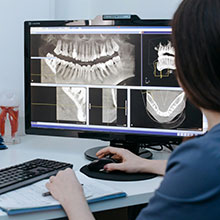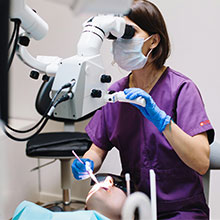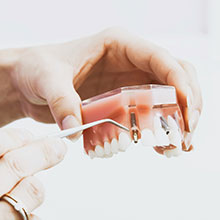Dental Bridges
If gaps in your smile make you feel self-conscious, a dental bridge can provide a natural-looking and lasting solution.
Bridges replace missing teeth by using a false tooth (or multiple teeth) anchored between two crowns. These crowns fit over the healthy teeth on either side of the gap, known as abutment teeth, or they can be supported by dental implants for added stability.
Bridges are usually made from porcelain fused to metal or ceramic, ensuring both strength and a natural appearance. They offer a more secure and long-lasting alternative to dentures.
Benefits of Dental Bridges
Restore the appearance of a full smile
Improve speech and chewing ability
Maintain facial shape and prevent sagging
Evenly distribute bite pressure, reducing strain on remaining teeth
Prevent surrounding teeth from shifting out of place
Treatment Steps
Preparing the Abutment Teeth – A thin layer of enamel is removed from the supporting teeth to make space for the crowns.
Taking Impressions – Moulds of your teeth are taken to ensure a precise fit for the bridge.
Placing a Temporary Bridge – A temporary bridge may be fitted to protect your exposed teeth while the permanent one is being made.
Fitting the Permanent Bridge – Once ready, the bridge is carefully checked for fit and comfort before being securely bonded with strong dental cement.
Types of Dental Bridges
Traditional Bridges – The most common type, using crowns on either side of the gap to support the false tooth.
Cantilever Bridges – Used when there is only one natural tooth available for support.
Maryland Bonded Bridges – Held in place with metal or ceramic wings attached to the back of the surrounding teeth, requiring minimal alteration of natural teeth.
Aftercare for Dental Bridges
To keep your bridge in good condition:
- Brush twice daily with fluoride toothpaste and floss regularly
- Pay extra attention to cleaning under the false tooth to remove trapped food and plaque
- Visit your dentist for routine check-ups and professional cleanings
- Keep the surrounding teeth healthy, as they provide crucial support for the bridge
With proper care, a well-maintained bridge can last over ten years, providing a durable and natural-looking solution for missing teeth.
If you’re considering a dental bridge to restore your smile, The Smile Avenue Dental Clinic is here to help. Book a consultation today!




